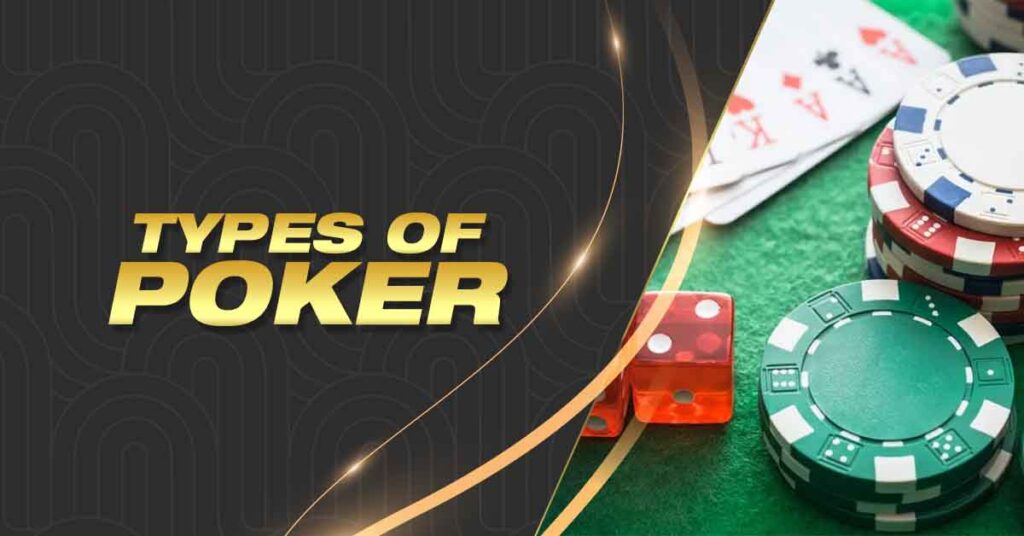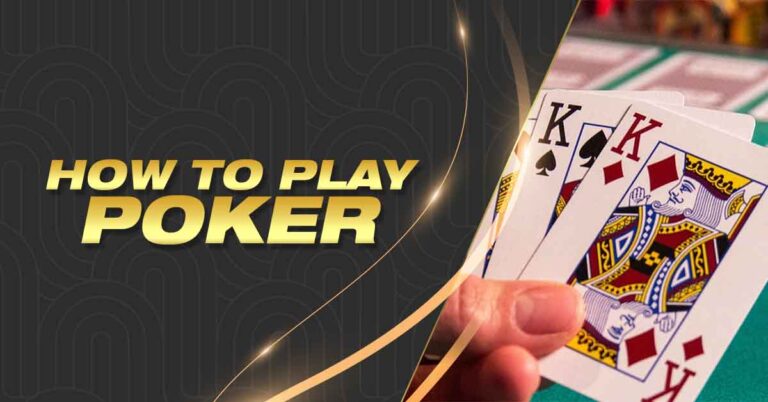A Comprehensive Guide to Different Types of Poker Games with Phlwin
When folks think about poker, they usually think of Texas Hold’em first. It’s the most popular type right now, but there are many other poker games worth checking out. Some examples include Omaha, Razz, Seven Card Stud, and Five Card Draw. Some versions mix different games, like H.O.R.S.E. and 10 Game Mix. Don’t forget about these options!

Different Categories of Poker Games
Poker games come in five main categories: draw games, stud games, community card games, miscellaneous, and mixed. Each of the first three categories has its own set of rules. The miscellaneous category includes creative games that don’t fit into the first three, while mixed games involve a combination of various types in one session.

Draw Games
In draw games, players can swap or “draw” several cards to build the best possible hand. The commonly played draw games are five-card and seven-card draw. In both versions, players are initially dealt five or seven cards and can exchange up to three of them with the dealer for a fresh set of three cards.
Stud games
Stud games, on the other hand, are different from draw games. In stud games, you can’t trade in any cards, and your final hand consists of the original cards you were dealt. Stud games might be simpler for those unfamiliar with poker because there are fewer decisions to make. When you’re dealt a hand, you only need to decide whether to fold or play, unlike draw games where you need to strategize which cards to keep and exchange. The skill level required for stud games is generally lower compared to games that involve more decision-making.
Community Card Games
In community card games, two types of cards are used: each player gets their cards (hole cards) for personal use, and there are shared cards dealt that every player can use. Texas Hold’em, the most commonly played poker game, is an example of a community card game with two hole cards and three community cards.
Miscellaneous/Novelty Games
Moving to miscellaneous/novelty games, these fall outside the typical poker categories and are creative games not commonly played in casinos. One example is “In Between,” where two cards are placed down, and players can bet on whether the third card will fall numerically between the first two. Wild cards, allowed to be played as any card, are also a feature in some of these games.
Mixed Games
Playing multiple types of poker games in a single session is referred to as a mixed game. The most commonly played mixed game is “H.O.R.S.E.,” which includes Texas Hold’em, Omaha Hi/Lo, Seven Card Stud (low hand wins), Seven Card Stud (high hand wins), and Seven Card Stud (hi/low split).
Popular Types of Poker Games
There are numerous variations of poker, each with its own rules and nuances. Here are some of the most common types of poker games:

2-7 Triple Draw
In 2-7 Triple Draw, players begin with five face-down cards. Three drawing rounds allow them to exchange cards, with betting taking place after each round. The objective in this lowball game is to achieve the lowest-ranking poker hand, making it a unique and strategic variant within the poker family.
5-Card Draw
The 5-Card Draw starts by dealing each player five cards. Afterward, players have the option to trade in up to three cards for new ones. The winner is determined by the player with the best five-card hand after this exchange, introducing an element of strategy and decision-making.
7-Card Stud
In 7-Card Stud, each player is dealt seven cards, with three facedown and four faceup. The challenge lies in forming the highest-ranking hand using any combination of five out of the seven cards. This game format adds complexity and depth to traditional poker gameplay.
Badugi
Badugi is a poker variant where players receive four cards, and a betting round initiates the action. Three drawing rounds follow, allowing players to exchange up to four cards. The twist in Badugi is that aces are considered low, and the goal is to create the best four-card hand, making it a unique and engaging poker experience.
Chinese Poker:
Chinese Poker is distinctive, starting with the dealer distributing 13 cards to each player. Players then split their cards into a three-card hand (front), a five-card hand (middle), and another five-card hand (back). The challenge lies in strategically arranging these hands, aiming for a low-ranking front hand and a high-ranking back hand.
Community Card
Games like Texas Hold ’em fall into the category of Community Card poker. Players are dealt pocket cards and share community cards placed faceup on the table. Crafting the best hand using a combination of pocket and community cards adds an interactive and dynamic element to the game.
Draw
In Draw poker variants, players have the opportunity to swap cards with the dealer, usually up to three, after the initial deal. This introduces an element of adaptability and strategic decision-making as players aim to improve their hands.
Omaha Hold ’em
Similar to Texas Hold ’em, Omaha Hold ’em involves four betting rounds and five community cards. The key difference is that players receive four pocket cards, creating a five-card hand by combining them with the community cards, adding complexity and strategic depth to the gameplay.
Pineapple Poker
Pineapple Poker shares similarities with Texas Hold ’em but introduces a unique twist. Players start with three pocket cards, discard one before betting begins, and then proceed with the familiar rules of Texas Hold ’em. This version introduces an aspect of surprise to the gaming experience.
Razz
Razz is a lowball poker variant where the traditional card rankings are inverted, with aces considered the lowest cards. The goal is to achieve the lowest possible hand, and the game follows a stud format, meaning players have no opportunity to swap cards.
Stud
Stud poker games deviate from standard poker by eliminating card swapping. Players must create their best hand from the cards dealt by the dealer, usually consisting of five or seven cards per hand. This format emphasizes strategic decision-making and reading opponents.
Texas Hold ’em
Texas Hold ’em is a widely popular poker variant. After anteing up, players receive two pocket cards and share five community cards. The game unfolds through rounds of betting and reveals with the aim of having the highest-ranked hand. The strategic interplay of pocket and community cards makes it a cornerstone of poker gameplay.
Common Terminologies at Different Types of Poker Game
These terms are mainly used in poker, but some are related to card games in general:

Ante
In poker, the ante is the minimum amount of money that players need to bet to participate in a round of betting. This initial contribution ensures players are eligible to play and adds to the stakes of the game.
All-in
When a player pushes all of their chips or cash into the pot, they are considered “all-in.” This move signifies a commitment of their entire stack to the current hand, creating a high-stakes situation.
Big Blind
The big blind is a forced bet placed by the player two positions to the left of the dealer in some poker variations. It establishes the minimum bet for the game and initiates the betting before the hand is dealt.
Blind
Blinds are forced bets in poker positioned to the left of the dealer. The small blind is one position left of the dealer, and the big blind is two positions left. Blinds contribute to the pot before any cards are dealt, setting the betting in motion.
Bluff
A bluff occurs when a player holds a weak hand but continues to play in a way that suggests strength. The goal is to deceive opponents into thinking they have a better hand. Other players can “call the bluff” by continuing to bet or raising.
Call
To “call” in poker means to contribute the minimum amount needed into the pot to continue with the next round of betting. Players match the previous bet, signaling their intention to stay in the game.
Cash Games
In cash games, players use actual cash instead of poker chips. The stakes are represented by real money, providing a different dynamic than chip-based games.
Check
Checking is an option during a betting round in certain poker variations. A player can choose to “check” if they do not wish to bet further. However, if another player raises the bet, all others must either call the new raise or fold.
Chips
Poker chips are commonly used in games, each assigned a specific value. Players exchange cash for these chips at the start, and they represent the monetary value during the game.
Dealer
The dealer is responsible for distributing cards to players and managing the game. In some cases, the dealer may not participate in the game itself.
Deuces
Cards with a “2” designation are called deuces. In certain poker games, like “deuces wild,” these cards can represent any other card in the deck.
Fixed Limit
In fixed-limit poker, players can only bet up to a predetermined amount, typically based on the stakes of the game. Betting is limited to this set amount.
Flop
In games with community cards, the flop refers to the first set of three cards placed faceup after the initial round of betting.
Fold
Folding involves ending a hand and conceding. Players put their cards facedown on the table, indicating they no longer wish to participate in the current hand.
Hand
A hand in poker consists of five cards, either the cards dealt to a player or a combination of player cards and community cards.
Kicker
The kicker is the highest-ranking card in a high-card hand or the highest-ranking card left after forming a hand. For instance, in a four-of-a-kind hand, the fifth card serves as the kicker.
No Limit
In a no-limit game, players can bet any amount of money they have during a betting round, providing an element of strategic freedom.
Online Poker
Online poker refers to playing poker on a computer or mobile device. The rules align with standard poker played in person.
Pocket Cards
In games with community cards, pocket cards are the cards held by a player that are not part of the shared community cards. Also known as “hole cards.”
Pot
The pot represents all the money or chips contributed by players during a game. The winner takes home the entire pot’s value.
Pot Limit
In a pot-limit game, players can only bet within a range starting from the ante and ending at the current amount in the pot.
Raise
Raising involves placing a bet higher than the minimum amount required to play, leading to an increase in the betting stakes for other players.
River
In games with community cards, the river is the fifth and final card among the community cards, dealt by the dealer.
Showdown
The showdown is the concluding phase where players reveal their hands or fold, determining the winner based on the hand rankings.
Small Blind
A small blind is a forced bet placed by the player to the left of the dealer, typically half the amount of the big blind, initiating the betting.
Turn
In games with community cards, the turn is the fourth card among the community cards, placed faceup after the flop.
FAQs
Conclusion
In conclusion, the world of poker offers a diverse array of games, each with its own set of rules, strategies, and unique appeal. Whether you’re drawn to the intensity of draw games, the simplicity of stud games, the communal dynamics of community card games, the creativity of miscellaneous games, or the challenge of mixed games, there’s a poker variant to suit every player’s preferences and skill level. With an understanding of the common terminologies and a grasp of the various poker types highlighted in this comprehensive guide, players can confidently navigate the exciting and multifaceted landscape of poker.
















